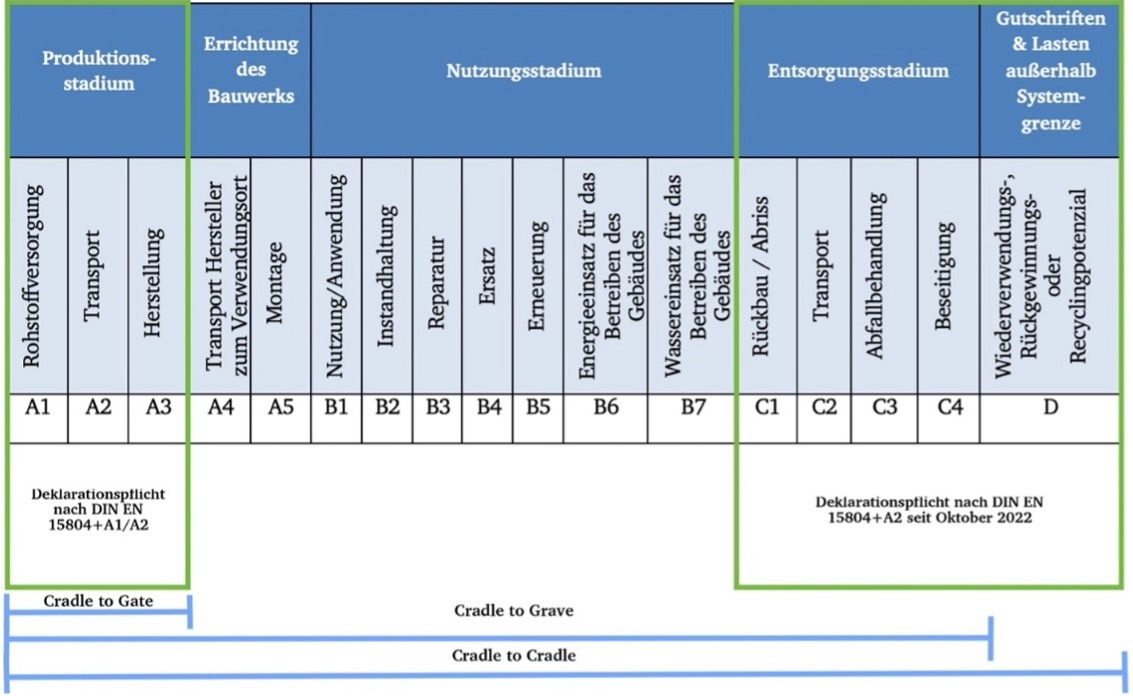An EPD is a type III environmental label in accordance with DIN EN ISO 14025. The EPD is based on previously defined Product Category Rules (PCR). These are defined in advance by the manufacturer, experts and institutions and set out a requirements profile for the respective building material in its respective category and the data used for this. On the basis of a life cycle assessment, the required data is determined by the manufacturer along the entire life cycle of the product in order to fulfill the requirements profile of an EPD. After subsequent verification by an independent institute, the data is published in the form of an EPD by the IBU (Institut Bauen und Umwelt e.V.), for example, and thus made available to the general public.
The advantage of the EPD is that it already contains all the necessary life cycle assessment data so that no other documents are required for the sustainability assessment. It is important to note here that the EPD does not evaluate the construction product, but acts as a purely informative source to provide the user with a sufficient information and data basis so that they can form their own opinion about the sustainability of a construction product.
According to DIN EN 15804, the four life cycle phases form the basic framework of the EPD. These include the production stage (A), the use stage (B), the disposal stage (C) and credits and debits from reuse, recovery or recycling (D). These are illustrated in the following diagram:

DUCON has already carried out an internal life cycle assessment (LCA) for the DUCON infiltration mortar, which has been validated by an independent institution. An officially valid EPD is available for both the ready-mixed concrete and the binder. This can be viewed in the Sustainability section of our website.
